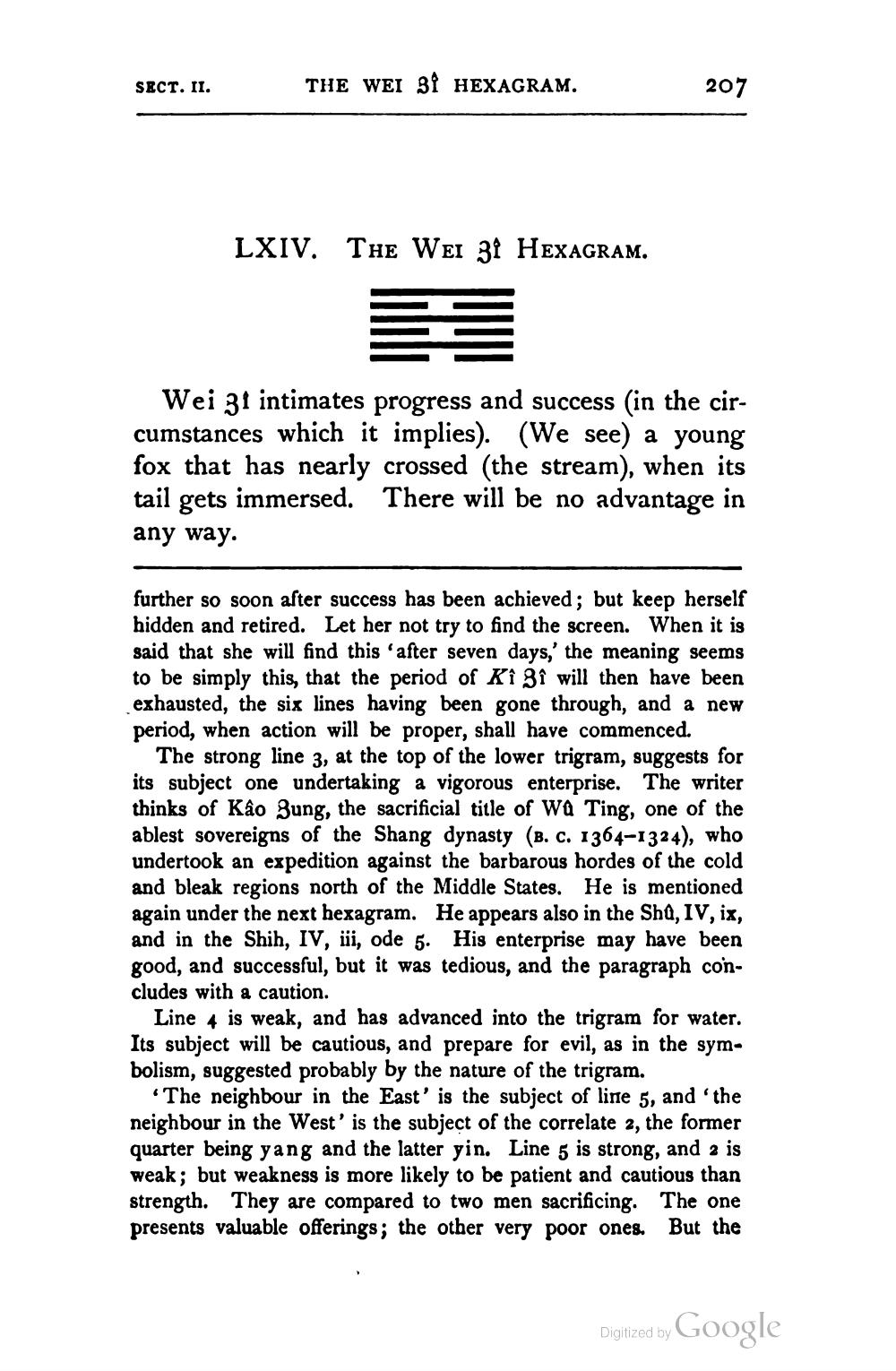________________
SECT. II.
THE WEI 38 HEXAGRAM.
207
LXIV. THE WEI 31 HEXAGRAM.
Wei 31 intimates progress and success in the circumstances which it implies). (We see) a young fox that has nearly crossed (the stream), when its tail gets immersed. There will be no advantage in any way.
further so soon after success has been achieved; but keep herself hidden and retired. Let her not try to find the screen. When it is said that she will find this after seven days,' the meaning seems to be simply this, that the period of Ki Zi will then have been exhausted, the six lines having been gone through, and a new period, when action will be proper, shall have commenced.
The strong line 3, at the top of the lower trigram, suggests for its subject one undertaking a vigorous enterprise. The writer thinks of Kâo Zung, the sacrificial title of WQ Ting, one of the ablest sovereigns of the Shang dynasty (B. C. 1364-1324), who undertook an expedition against the barbarous hordes of the cold and bleak regions north of the Middle States. He is mentioned again under the next hexagram. He appears also in the Sha, IV, ix, and in the Shih, IV, iii, ode 5. His enterprise may have been good, and successful, but it was tedious, and the paragraph concludes with a caution.
Line 4 is weak, and has advanced into the trigram for water. Its subject will be cautious, and prepare for evil, as in the symbolism, suggested probably by the nature of the trigram.
'The neighbour in the East' is the subject of line 5, and the neighbour in the West' is the subject of the correlate 2, the former quarter being yang and the latter yin. Line 5 is strong, and a is weak; but weakness is more likely to be patient and cautious than strength. They are compared to two men sacrificing. The one presents valuable offerings; the other very poor ones. But the
Digitized by Google




